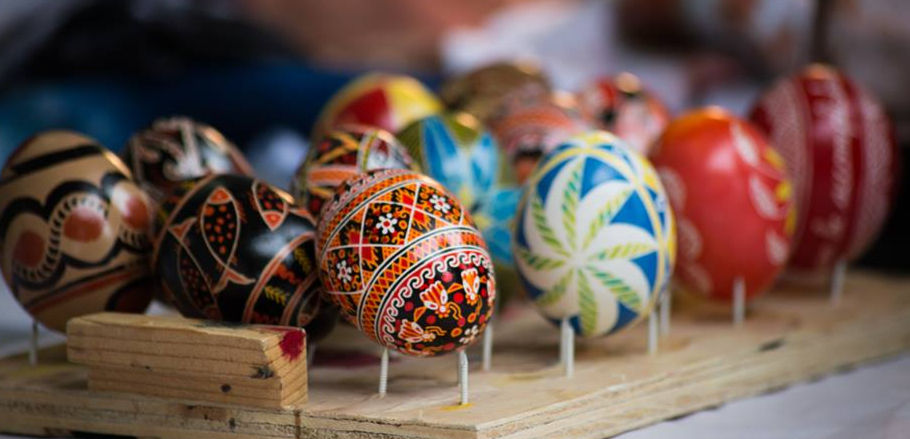The Art of Pysanky: How Eggshells Preserve Culture and Stories
- Sarina Ehrgott
- Jun 16
- 3 min read
Updated: Jul 31
At first glance, a decorated egg may seem like a simple ornament, but in the hands of artist Ingrid Hersman, it becomes a sacred symbol of identity, heritage, and hope. Ingrid teaches the ancient art of pysanky—Ukrainian wax-resist egg decoration—at BDAC’s Summerfest Heritage Arts Workshop Series, offering participants a chance to connect with a centuries-old folk tradition and the meaning embedded in every line and color.

Ancient Origins, Layered Meanings
The word pysanka comes from the Ukrainian verb pysaty, meaning “to write.” In this tradition, eggs are not painted, but written—layer by layer—using hot beeswax and dye. A stylus called a kistka applies wax in patterns that resist the dye. The egg is dipped into progressively darker colors, with each wax layer protecting what came before. When the wax is melted away, the intricate design is revealed.
More than decoration, pysanky are vessels of symbolism. As documented by UNESCO, they reflect a blend of pre-Christian beliefs and Christian symbolism, expressing hopes for fertility, protection, renewal, and spiritual well-being. Shapes like suns, spirals, and meanders represent continuity and harmony, while colors carry distinct meanings: red for love and joy, black for remembrance, and white for purity.
A Resilient Cultural Practice
Pysanky is a folk art that has survived centuries of social and political change. As UNESCO notes, this practice was preserved in family traditions and local communities, passed from mothers to daughters, often taught by example rather than instruction. During Soviet rule, it was discouraged, yet artists and families continued the tradition quietly, ensuring its survival into the present day.
In 2023, pysanka-making was officially inscribed on UNESCO’s List of Intangible Cultural Heritage in Need of Urgent Safeguarding, recognizing its importance to Ukrainian cultural identity and the need to support its transmission amid war and displacement.
Meet the Artist: Ingrid Hersman
Ingrid Hersman’s path to pysanky is one of discovery, connection, and care. Born in Berlin, Germany, Ingrid did not grow up in a Ukrainian family—though her heritage includes deep Eastern European roots. “My DNA is 75% Eastern European, encompassing Slavic regions including Ukraine,” she explains. “But I never met my grandparents. My parents and two grandparents were also born in Berlin.”
Her journey with pysanky began decades ago when she met a friend of Polish and Ukrainian heritage who introduced her to the wax-resist technique. “She took me under her wings and taught me everything she knew,” Ingrid recalls. That mentorship sparked a passion that would grow into a personal and public dedication to the art form.
Now a widely recognized folk artist and teacher, Ingrid shares pysanky not just as a craft, but as a path to cultural understanding, memory, and mindfulness. “Even though I didn’t inherit the tradition directly from family, I’ve learned that these practices still live within us—waiting to be remembered.”
“I believe every egg tells a story,” she says. “It connects us to something older than ourselves. We slow down, we focus, and we put meaning into what we’re doing. That’s the power of pysanky.”

More Than a Workshop
Ingrid’s Summerfest workshop is an invitation to write more than patterns on an egg—it’s a chance to write yourself into a larger story. Participants of all ages will leave with a finished pysanka, new skills, and a deeper appreciation for a folk art that carries centuries of symbolism and resilience.
Take your place in a thread of heritage that still thrives.
More resources: Living Traditions YouTube, the Met YouTube







Comments